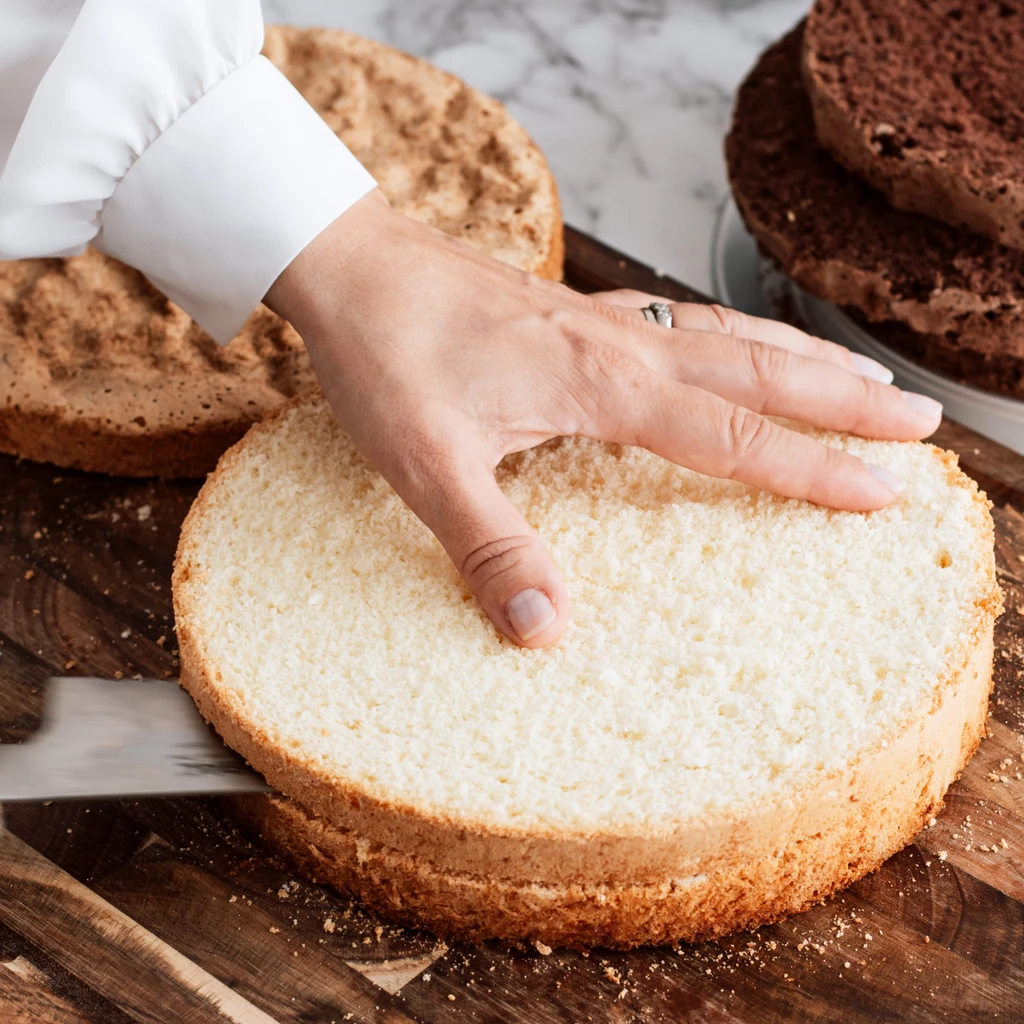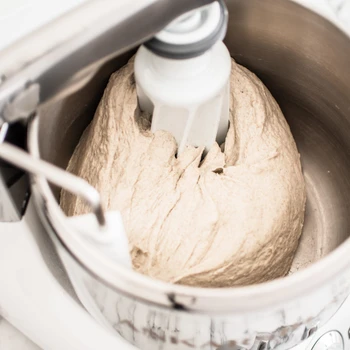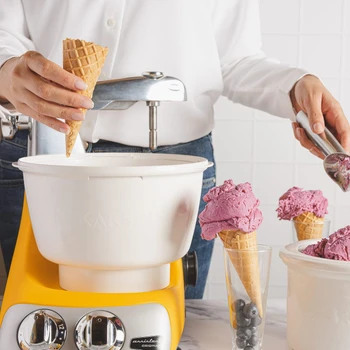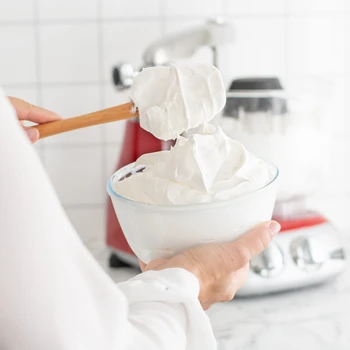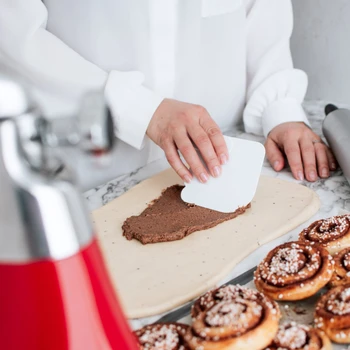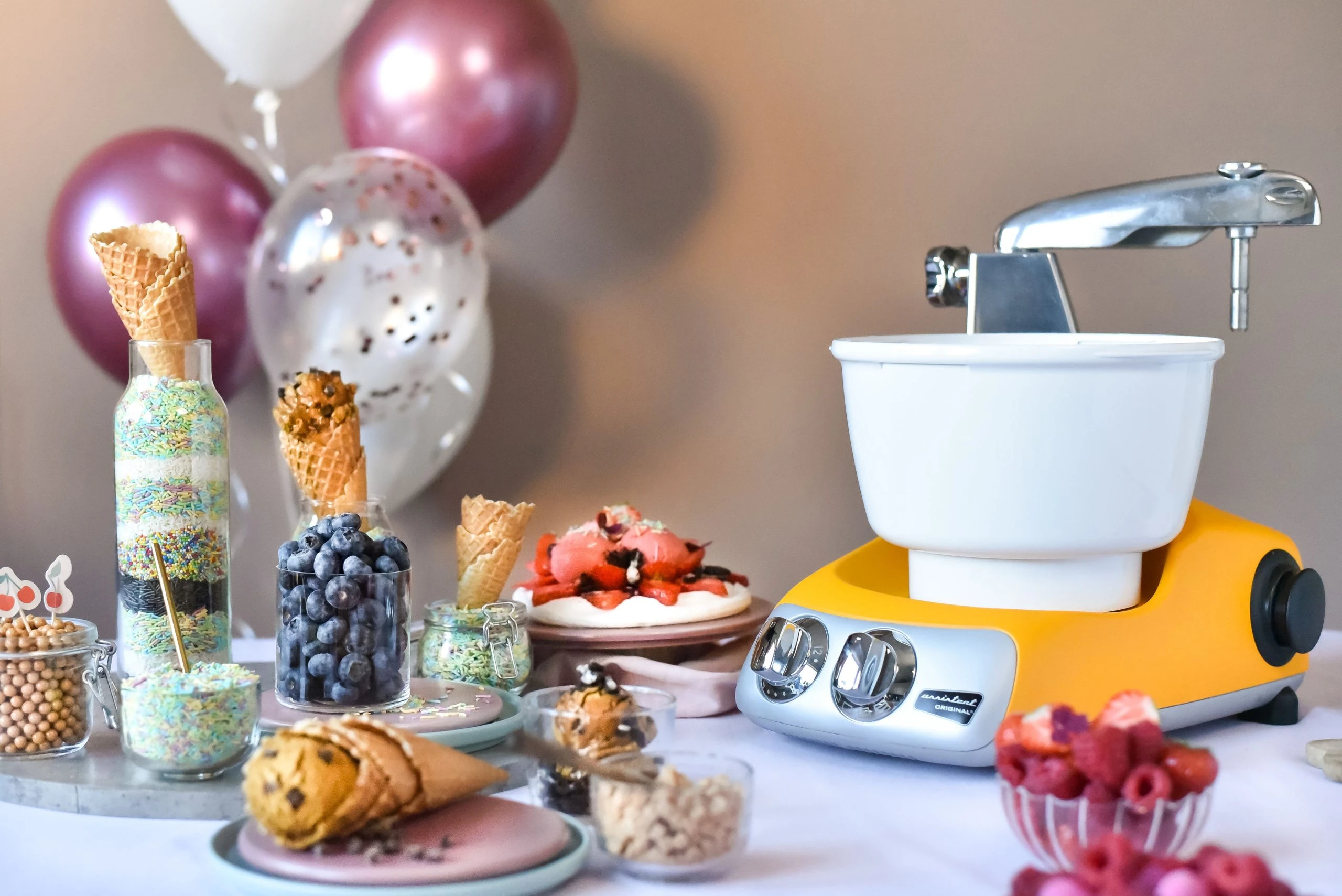Cake base, or sponge cake as it is called in bakers’ parlance, is an airy cake that is divided into 2-4 layers and served as the base for a cake.
A classic cake base consists of eggs, sugar, wheat flour and baking powder. To make it gluten-free, the wheat flour can be replaced with potato flour. It is also fine to use half wheat and half potato flour to get an even airier and crispier base.
For a cocoa base, part of the flour is replaced with cocoa. If you want to bake without eggs, you can use aquafaba and make a vegan cake base. You can also make a cake out of a regular sponge cake.
In addition to reading through the entire recipe before you start, here are more tips to get the perfect cake base!
Ingredients
Make sure the ingredients are fresh and at room temperature.
Form
Feel free to use a springform pan when baking the cake base, they come in many different sizes. Place a piece of baking paper underneath the tin and trace and cut out pieces of baking paper to cover the inside of the edges with it. A little butter makes the paper stick well.
Instead of using baking paper, you can grease the inside of the mold with butter and a light coating of flour, breadcrumbs, semolina or cocoa. Coconut flakes also work well and add a nice flavor.
You can bake the cake in several equally sized molds if you want to avoid having to divide the base yourself. Make sure to distribute the batter evenly between the molds and shorten the baking time.
Whisk
To get an airy base, it is important to beat the eggs and sugar until it is white and fluffy. Then fold in the dry ingredients carefully to preserve the air in the batter. When you have poured the batter into the mold, you can tap the mold against the table so that the batter distributes evenly.
Color
If you want to color a cake base, you can add the color just before you fold in the dry ingredients. Make sure to keep as much air as possible in the batter.
Bake
Do not open the oven for at least 20 minutes in the beginning of baking, as this risks the cake collapsing.
Use a toothpick to check if the cake is done, the toothpick must be completely dry, or the cake will collapse as it cools down. The middle can rise slightly and make the bottom pointy.
Adjust the baking time according to the size of the tin you are using and, as all ovens are different, your oven. The recipes below are calculated for molds of the size 20-24 cm and if you use a larger mold, you will probably need to shorten the baking time.
Rest
After the cake base has finished baking, you can either let the base cool completely in the tin or gently run a table knife around the edges of the tin. Place a cooling rack on top of mold, gently turn upside down, loosen the mold´s lock and let it cool completely under the mold. Alternatively, you can let the cake cool completely in the pan without turning it over.
Cutting
Make sure the cake base has cooled completely and is on a flat surface before dividing it. If you want to be sure that the bottoms will be the same height, you can measure with a regular ruler. Use a sharp serrated knife to divide the cake, alternatively a thin strong thread, example nylon, to pull through.

Brush
To flavor it further or if you think the base is dry, you can brush it with sugar syrup (recipe below). Another tip is to brush the base with a flavor you like. Juice, coffee, liqueur or other flavored drink can easily enhance a cake.
Store
The cake base can be bakesd a couple of days before it is to be finished. Line the mold with the undivided cake and let it stand at room temperature.
A ready-baked cake base can be stored in the freezer and will last at least a couple of months. Freeze it without cutting it first. Some people find it easier to divide a cake base when it is frozen.
Troubleshooting
Sometimes the result is not as desired, and this can be due to several things. The batter was whipped for too long, the oven temperature was to high or low, the amount of ingredients or their quality or the size of the mold.
If the cake turns out to be high in the middle, there are several ways to fix it. Either you gently shake the cake off the edges of the form, right when you take it out of the oven, and turn the cake upside down onto a baking rack. Then the rest of the cake weighs down the peaked part and it becomes flat. Another way is to, when the cake is still warm, put a sheet of baking paper on to and gently press down the pointed part with your hand, thus flattening the cake. Alternatively, you can simply cut off the peaked part with a knife after the cake has cooled and that way level it.
If the cake collapses, there is not much you can do to save it. However, you can use the cake to make something other than just a whole cake in several layers, such as pastries or cake pops. You can also cut off the part of the cake that is flat and use it as an extra layer for the next cake.
________________________
Here are recipes for different cake bases: Classic, Gluten-free, Vegan and one with cocoa. Vanilla sugar can be omitted in all recipes and replaced with another spice if desired.
Classic cake base
4 eggs
180 g sugar
120 g wheat flour (alternative 60 g wheat flour + 80 g potato flour)
2 tsp baking powder
2 tsp vanilla sugar (can be omitted)
Butter for the mold
Instructions:
1. Set the oven to 175 °C/357 °F.
2. Line the bottom and sides of a 20-24 cm springform pan with baking paper. Brush a little butter on the mold to ensure the paper sticks.
3. Sift and mix flour, baking powder and vanilla sugar in a bowl.
4. Beat eggs and sugar on low speed for one minute. Increase the speed and beat for about four minutes on medium to high speed until the batter is white and fluffy.
5. Reduce the speed to low and add the dry ingredients. Let the machine mix for a maximum of 30 seconds, switch off the machine and remove the beaters. If the dry ingredients have not been fully incorporated, you can use a spatula and carefully, so that the air bubbles do not disappear, mix to a smooth batter.
6. Pour the batter into the mold and tap the mold against the table so that the batter is distributed evenly.
7. Bake in the oven, one rack down from the middle, for 35-40 minutes. Use a toothpick to check if the cake is done, it must be completely dry when you take it out or the cake will collapse as it cools.
8. Allow the cake to cool completely in the tin.
___________________
Gluten-free cake base
4 eggs
180 g sugar
160g potato flour
2 tsp baking powder
2 tsp vanilla sugar (can be omitted)
Maybe butter for the mold
Instructions:
1. Set the oven to 175 °C/357 °F.
2. Line the bottom and sides of a 20-24 cm springform pan with baking paper. Brush a little butter on the mold to ensure the paper sticks.
3. Sift and mix potato flour, baking powder and vanilla sugar in a bowl.
4. Beat eggs and sugar on low speed for one minute. Increase the speed and beat for about four minutes on medium to high speed until the batter is white and fluffy.
5. Reduce the speed to low and add the dry ingredients. Let the machine mix for a maximum of 30 seconds, switch off the machine and remove the beaters. If the dry ingredients have not been fully incorporated, you can use a spatula and carefully, so that the air bubbles do not disappear, mix to a smooth batter.
6. Pour the batter into the mold and tap the mold against the table so that the batter is distributed evenly.
7. Bake in the oven, one rack down from the middle, for 35-40 minutes. Use a toothpick to check if the cake is done, it must be completely dry when you take it out or the cake will collapse as it cools.
8. Allow the cake to cool completely in the tin.
______________________
Egg-free cake base (vegan)
In this recipe the eggs are replaced with chickpea liquid which, together with sugar, is first whipped into a meringue. This bottom will be slightly shorter and will be best in two layers.
210 g wheat flour
2 tsp baking powder
2 tsp vanilla sugar (can be omitted)
2 dl Aquafaba (the liquid from 1 can of chickpeas, 400g)
1 tsp apple cider vinegar
180 g caster sugar
2 tsp rapeseed oil.
Instructions:
1. Set the oven to 175 °C/357 °F.
2. The bottom and sides of a 20-24 cm springform pan with baking paper. Brush a little butter on the mold to ensure the paper sticks.
3. Sift and mix wheat flour, baking powder and vanilla sugar in a bowl.
4. Whisk Aquafaba and vinegar until white and frothy.
5. Add sugar, a little at a time, while whisking, until you have a glossy meringue, about 10 minutes.
6. Add oil and whisk together.
7. Reduce the speed to low and add the dry ingredients. Let the machine mix for a maximum of 30 seconds, switch off the machine and remove the beaters. If the dry ingredients have not been fully incorporated, you can use a spatula and carefully, so that the air bubbles do not disappear, mix to a smooth batter.
8. Pour the batter into the mold and tap the mold against the table so that the batter is distributed evenly.
9. Bake in middle of the oven for 30-40 minutes. Use a toothpick to check if the cake is done, it must be completely dry when you take it out or the cake will collapse as it cools.
10. Allow the cake to cool completely in the tin.
Cake base with cocoa
To bake a cake base with cocoa, you simply replace some of the flour with cocoa. Replace 30 g of flour with 30 g of cocoa in one of the recipes above.
Syrup
A simple syrup consists of equal parts water and sugar. It can be made ahead of time and will last a long time if you keep it in the fridge. Brush the cake base with sugar syrup to preserve the moistness and give an extra sweetness.
1 part water
1 part sugar
Instructions:
1. Mix boiling water with sugar and stir until the sugar is completely dissolved. Let cool.

